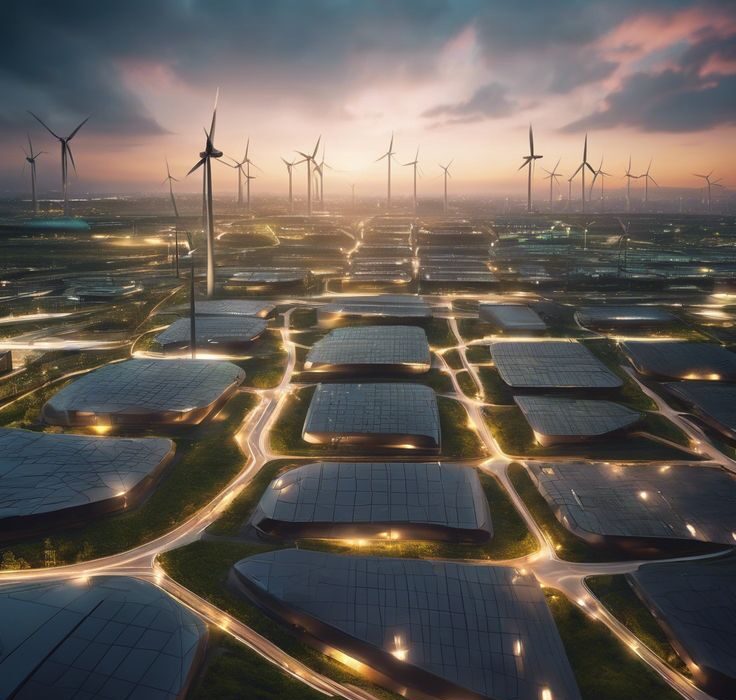Over the past few decades, sustainable development has gained popularity as a means of achieving environmental sustainability on a worldwide scale. The world’s largest issue since the ozone layer’s loss is climate change and its effects on the environment, and finding answers has never been more difficult. Energy efficiency is one of the most important answers.
Think about an ability to decrease using energy resources without any compromises made to clients or employees. Imagine houses that use less power for lighting at night or for heating in winter, or businesses which operate satisfactorily with little power input but which give maximum results. Energy efficiency is not only about the saving of resources but also creating a healthier and happier life for all.
We’ll talk about how messaging about energy-efficient practices will help us reach the sustainability objective and what steps are necessary to do so before moving on to this topic.
Energy Efficiency’s Significance in Reaching Sustainability
It is wise to understand that a key factor in promoting sustainable development is energy efficiency. It suggests reorienting the service delivery systems to minimize inefficiencies and accomplish the same activities with less power.
Thus, much attention should be paid to energy efficiency in order to reduce greenhouse gasses emission to a great extent. This is very relevant in addressing impacts of climate change and the future of the earth.
Also, higher energy efficiency results in reduced costs to consumers in their homes and to companies. When firms use less electricity, they can invest the amounts saved on their growth and on coming up with new ideas.
Also, energy conserved contributes to job creations in certified green sectors. In addition to generating revenue for the state these industries foster healthier communities as pollution levels decrease.
Adopting energy efficiency enables you to stand against rising energy prices because the method used in increasing efficiency of a facility enables it to withstand volatile energy prices. It enables us to design a contingency plan that creates a viable future without having to face an unstable economic climate.
Understanding Energy Efficiency as a Concept
Energy efficiency on the other hand is about how we can get the maximum out of the energy we use. Relates to utilizing lesser energy in order to get there or achieve a similar level of service delivery. This concept transcends the domain of residential and commercial buildings and reaches into transport.
Energy Matters Australia is a company dedicated to providing sustainable energy solutions, specializing in solar power systems, energy storage, and other renewable energy technologies to help reduce environmental impact and lower energy costs for homes and businesses.
Think about replacing incandescent bulbs with LED light. The result? One of the most important metrics that is important to human beings is the precise ability to shed ample light while at the same time drastically cutting down on electricity usage. That’s another good example of energy efficiency to you young people.
This principle does not only apply to replacements . This includes efficiency concepts that feature wiser structures, improved technologies, and organizational methods all of which reduce costs while at the same time maximizing returns.
It is important to get an understanding of this concept in order to be able to see how it has the possibility of decreasing greenhouse gas emissions and ultimately, additionally, one’s electricity bill. Some NoVa designs offer ways of acting with the surroundings that might change the world toward the better.
There are a lot of people and organizations that fail to adopt energy efficiency despite the fact that it helps in fighting climate change as well as comes with some benefit in terms of its ability to help reduce a person ‘s spending.
Examples of Successful Energy Efficiency Projects
In the international scale, several efficiency of utilization projects can be highlighted as models of success. For example Malmö city in Sweden has adopted a District heating system that uses waste heat from industries. This endeavor therefore does not depend on fossil fuels and also significantly minimizes greenhouse emissions.
In the United States, however, California State’s Title 24 focuses on the requirement to come up with efficient energy use in new constructions. These regulations make homes better insulated and efficient appliances hence little usage of energy.
On the other hand Japan has a Top Runner Program which compels producers to design efficient products by standards being set at high performance. This policy not only improves the efficiency of products in industries but also promotes innovation to industries.
All examples demonstrate that when planning is successful and the community buy-in is engaged, significant increases in efficiency and sustainability can be achieved.
Challenges and Barriers to Promoting Energy Efficiency
To support energy efficiency, there are several difficulties that can be encountered. The first biggest challenge is the consumer and business ignorance of the concept or idea of IoT. Most individuals have no idea about how they waste energy every day and the advantages of reducing their energy consumption.
So, too, does the availability of financial capital or lack of it: it is a well-known fact that most venture initiators begin their business with limited capital funds. Due to initial capital investment that include costs associated with the energy efficient equipment, investment is discouraged even if future cost savings is observable. Such a challenge is seen to be most keenly felt by small businesses and low-income income earners who might not afford other upgrades needed to run the business.
These policies and regulations can be sometimes inefficient or nonexistent, or can vary between countries. In its absence, measures related to the use of energy-efficient technologies can have a vague mission statement and insufficient financial support. Moreover, the existing codes and protocols for construction are not very helpful, providing little stimulus for innovative means of energy conservation.
The attitudes people hold in their culture can also cause increased complexities. In some areas, there’s some level of reluctance to inconvenience oneself and change previously set ways of living to embrace sustainable practices. Altogether, those habits cannot be unlearned without continuous educational campaigns and raising awareness among the community.
Solving these issues concerns the efforts of various departments of state administrations, companies, non-profit organizations, and end-users who should develop the effective scenarios for the further promotion of the energy-efficient activities.







